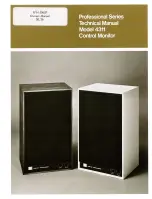
For reasons of safety and conformity (CE) it is not permitted to modify or change parts of the product.
Electrical devices should be out of reach of children. Please be extra careful if children are around.
Opening and installation of this product has to be performed by authorised electricians only.
If you have not the corresponding expertise, ask qualified specialists or workshop for installation and commissioning. This product
and connected devices can be damaged as a result from inappropriate installation, connection or operation. Furthermore, this could
lead to other damages e.g. short circuit, fire or electric shock.
The product must not be installed or used in places where a risk of explosion may exist.
Do not touch antenna connectors with live parts.
The product should only be used in a case adequate for mains-voltage if applied!
3
System operating range
The system SH-12 is designed for a large operating range of many hundred meters. Walls including steel reinforced concrete can be
penetrated. The maximum range can be achieved under optimum conditions and by line-of-sight contact between transmitter and
receiver without disruption by external high frequency disturbances.
The following are possible causes that could reduce range of operation:
Obstructing buildings, vegetation or other factors will substantially reduce the operating range.
The distance between the antenna and the operator’s body or other conducting objects (e.g. Earth) may influence the working
range.
Background “electrical noise” could be relatively high so that the signal-to-noise-ratio may decease and therewith the operating
range. Also other devices, with similar operating frequency, operated in the neighbourhood of the receiver may reduce the
sensitivity.
Operating the transmitter adjacent to badly shielded electronic components (e.g. PC’s) that can produce electromagnetic distortion,
may severely reduce the range of operation and could result in intermittent operation.
Adjustable and open components should not be adjusted or modified.
4
Description
Push button mode
As long as one of the inputs T1-T4 is connected to GND the transmitter sends the information T1-T4 to the receiver.
Switch mode
The transmitter is sending only a signal if the input state T1-T4 changes. If, for example, T1 is connected to GND, the transmitter sends
a signal and interrupts the communication after receiving an acknowledgement. Only if T1 is no more connected to GND the transmitter
will transmit a signal again.
Control LEDs
The user gets information about the radio system and the communication by following visual signals:
Function LED flashes 3 times per second while contact is closed: Proper reception is acknowledged
• • • •
Function LED double-flashes 3 times per second while contact is closed: Proper reception is
acknowledged and transmitter battery is low
•• •• •• ••
Function LED flashes often within 2 seconds: The receiver does not answer
•••••••••••••••••
Bat LED blinks 3 times: Weak receiver supply
• • •
Bat LED blinks 8 times: Critical receiver supply
• • • • • • • •
SH-12 receivers acknowledge a proper reception by using the weak receiver supply signal.
Each transmitter has an individual serial number. If more transmitters for one receiver are used, than each transmitter has to be
programmed to the receiver.
Beginning with the receiver version HSW xx.20 it is possible to learn transmitters with or without acknowledgement.
The corresponding learning proccess may result in a reconfiguration of the transmitter. This may lead to
incompability with receivers, which have previously learned this transmitter.
5
Installation
For the location of the transmitter, select a place which is not shielded by conducting objects and position the antenna in such a way
that it is not subject to interference from the rest of the circuit and is parallel to the receiver antenna. The helical antenna should not
be positioned over or too close to the electronics.
Before installing the transmitter, please test and verify the function at the
desired location. The location may have to be changed for optimum operation.
Supply voltage:
Connect the supply voltage to the input 4,5...24V DC or
12V AC.
Take care of the technical data. Maximum supply voltage is 24V
DC or 12V AC. Greater supply voltage destroys the transmitter.
-
4
-
Supply
DIP-Switch
Frequency
Function LED
Bat LED
Example circuit for T1


























